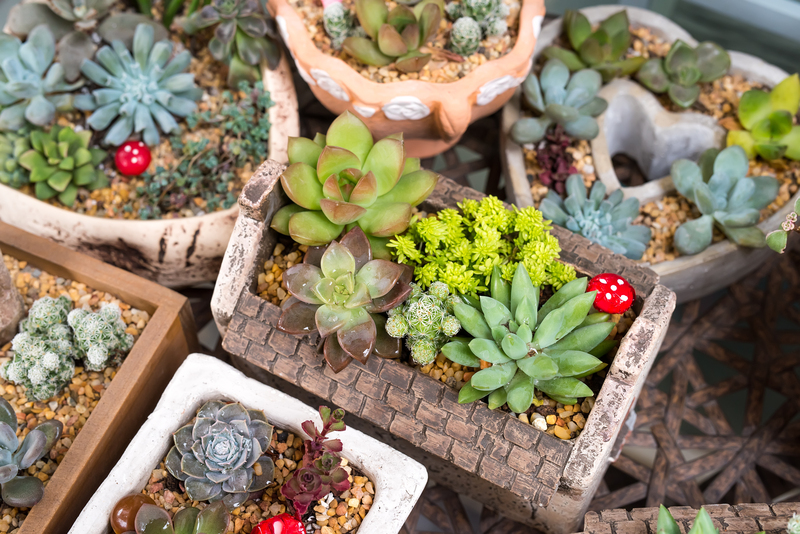Evergreen Climbers for Shade: Infusing Life into Dimly Lit Corners
Posted on 15/08/2025
Evergreen Climbers for Shade: Infusing Life into Dimly Lit Corners
Transform your dimly lit spaces by introducing lush, vibrant greenery using evergreen climbers. These versatile plants bring both beauty and vitality to your shaded areas, requiring minimal maintenance once established. Below, we explore several options that are particularly suited for shady environments, ensuring your garden or indoor space remains lush throughout the year.
The Benefits of Evergreen Climbers
Before diving into specific plants, let's consider the numerous benefits of evergreen climbers for shade:
- Year-round greenery: Unlike deciduous plants, evergreen climbers retain their leaves all year round, offering continuous aesthetic appeal.
- Energy efficiency: They can act as a natural insulator for buildings, providing shade in summer and reducing heat loss in winter.
- Wildlife support: Many climbers offer habitats and food for birds and insects, supporting local biodiversity.
- Low maintenance: Once established, they generally require minimal care, making them an excellent choice for busy gardeners.
Selecting the Right Evergreen Climber for Shade
Choosing the right climber for your shady spot depends on several factors such as the amount of space available, the climber's growth habit, and your personal aesthetic preferences. Here are some top contenders:
1. English Ivy (Hedera helix)
English Ivy is a classic choice for shadier areas, known for its dense foliage and adaptability. Ideal for covering unsightly structures or walls, it thrives in partial to full shade.
- Growth habit: Vigorous and expansive, it can quickly cover large areas.
- Light requirement: Prefers partial to deep shade.
- Maintenance: Regular pruning is needed to keep its growth in check and maintain the desired shape.
2. Japanese Climbing Hydrangea (Schizophragma hydrangeoides)
This stunning plant offers heart-shaped leaves and showy summer blooms. Japanese Climbing Hydrangea is perfect for shaded walls and tree trunks, providing year-round interest with its bark and leaf textures.
- Growth habit: Slow-growing but capable of reaching up to 40 feet when mature.
- Light requirement: Prefers partial shade but can tolerate deeper shade.
- Maintenance: Little required, though occasional pruning supports a tidier appearance.
3. Clematis Armandii
Clematis Armandii is an evergreen clematis boasting stunning, fragrant white flowers in early spring. Its glossy green leaves are a lovely contrast in shaded areas.
- Growth habit: Climbs vigorously and can spread extensively with adequate support.
- Light requirement: Thrives in partial shade, with roots kept cool and shaded.
- Maintenance: Requires support to climb; pruning after flowering encourages new growth.
4. Evergreen Honeysuckle (Lonicera henryi)
Evergreen Honeysuckle is a hardy climber that offers lush foliage and beautiful red and gold flowers. It's perfect for dimly lit gardens and attracts pollinators with its scent.
- Growth habit: Moderate grower, suitable for walls and trellises.
- Light requirement: Thrives in partial shade.
- Maintenance: Regular pruning maintains its shape and promotes bloom.


Tips for Growing Climbers in Shaded Areas
Growing evergreen climbers in shade does require some specific considerations to ensure they thrive:
Soil Preparation and Planting
Most shade-loving climbers prefer moist, well-drained soil that's rich in organic matter. Before planting, add organic compost to enrich the soil base and improve drainage and moisture retention.
Consider the Light Levels
Evaluate the light availability in your planting area. While many climbers can thrive in partial shade, some may need at least some dappled sunlight to perform their best. Observing light patterns at different times of day can help with placement decisions.
Supporting Structures
Most evergreen climbers will need some form of support to grow upwards. Consider using trellises, wire frames, or pergolas to guide the climber's growth. Secure them properly to handle the weight as they mature.
Feeding and Watering
Shady areas can lead to drier soil, so consistent watering is vital, particularly during dry spells. Climbers in poor soil may benefit from a balanced liquid fertilizer during the growing season to promote lush growth and flowering.
Conclusion
Incorporating evergreen climbers in your shady spaces is a wonderful way to add interest, texture, and life to areas that might otherwise be overlooked. By selecting appropriate varieties and providing the right care, you can cultivate a beautiful, verdant environment that thrives in less direct sunlight. Embrace these dynamic plants and let your imagination run wild in crafting your ideal green oasis.

